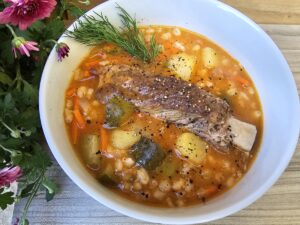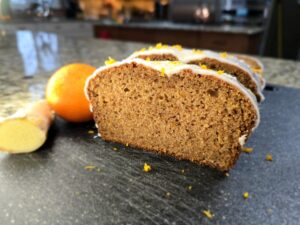Preheat the oven to 275°F.
Heat a spoonful of oil a heavy, ideally cast iron, pan over medium high heat for at least 4 minutes, until very hot and shimmering. If you don't preheat enough, your pork will never properly brown.
Dry your tenderloin with the paper towels. Skipping this step will prevent proper browning which brings great flavours and textures to the dish. Season generously with salt and pepper.
Sear your tenderloin on all sides. The process should take about 10-12 minutes and the pork should be golden brown on all sides.
If you double the recipe, brown the meat in batches or in two separate pans as overcrowding the pan will prevent the meat from browning.
Transfer your tenderloin to foil lined rimmed baking sheet. Or, if your skillet is oven safe and large enough to accommodate the pork, leave it right in the skillet.
You may proceed as is or you may brush the seared pork with the optional glaze.
To make the glaze, combine all of the glaze ingredients in a small pot and simmer for 3-5 minutes until thickened.
Transfer the tenderloin to preheated oven and bake uncovered for 25-45 minutes. Do not overcook the tenderloin. The internal temperature according to the Government-suggested guidelines is 145°F.
Deciding to what doneness to cook the meat is a personal choice. For beef tenderloin, I prefer mine on a rarer side. However, for pork, I personally prefer to cook mine to around 145-150°.
Consider broiling your pork for the last 2 minutes of cooking or so, watching closely not to burn as the sugars in the glaze will burn fast.
If you wish, you can serve your pork with grilled peaches. Simply grill your peaches over medium-low heat (be sure to oil the grill) for about 4 minutes, flip and grill the other side for 3-5 minutes until the peaches are tender.
When the pork is ready, remove from the oven, tent with foil and allow to rest for about 7 minutes. Slice and serve with optional peaches and any other optional garnishes of choice (seeds, nuts, cranberries, etc.) Enjoy.
Ingredients
Directions
Preheat the oven to 275°F.
Heat a spoonful of oil a heavy, ideally cast iron, pan over medium high heat for at least 4 minutes, until very hot and shimmering. If you don't preheat enough, your pork will never properly brown.
Dry your tenderloin with the paper towels. Skipping this step will prevent proper browning which brings great flavours and textures to the dish. Season generously with salt and pepper.
Sear your tenderloin on all sides. The process should take about 10-12 minutes and the pork should be golden brown on all sides.
If you double the recipe, brown the meat in batches or in two separate pans as overcrowding the pan will prevent the meat from browning.
Transfer your tenderloin to foil lined rimmed baking sheet. Or, if your skillet is oven safe and large enough to accommodate the pork, leave it right in the skillet.
You may proceed as is or you may brush the seared pork with the optional glaze.
To make the glaze, combine all of the glaze ingredients in a small pot and simmer for 3-5 minutes until thickened.
Transfer the tenderloin to preheated oven and bake uncovered for 25-45 minutes. Do not overcook the tenderloin. The internal temperature according to the Government-suggested guidelines is 145°F.
Deciding to what doneness to cook the meat is a personal choice. For beef tenderloin, I prefer mine on a rarer side. However, for pork, I personally prefer to cook mine to around 145-150°.
Consider broiling your pork for the last 2 minutes of cooking or so, watching closely not to burn as the sugars in the glaze will burn fast.
If you wish, you can serve your pork with grilled peaches. Simply grill your peaches over medium-low heat (be sure to oil the grill) for about 4 minutes, flip and grill the other side for 3-5 minutes until the peaches are tender.
When the pork is ready, remove from the oven, tent with foil and allow to rest for about 7 minutes. Slice and serve with optional peaches and any other optional garnishes of choice (seeds, nuts, cranberries, etc.) Enjoy.









